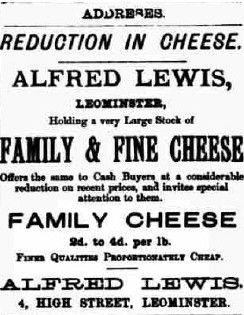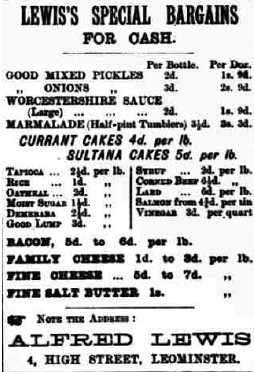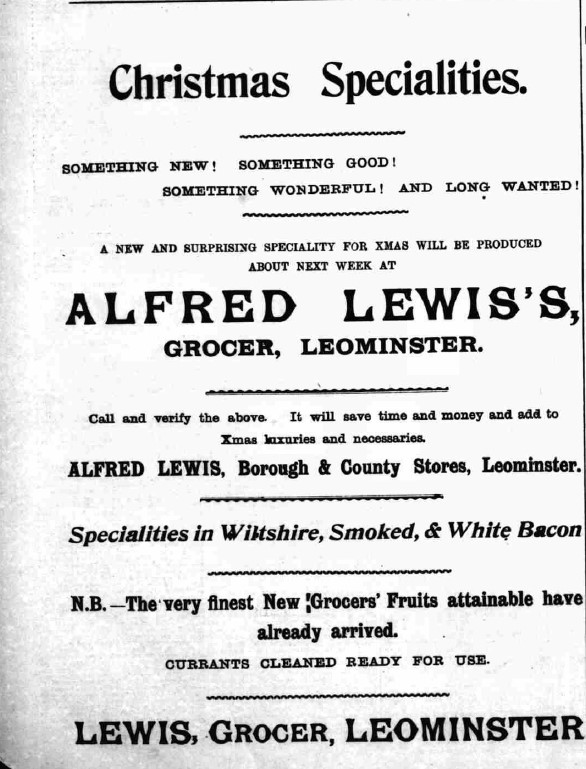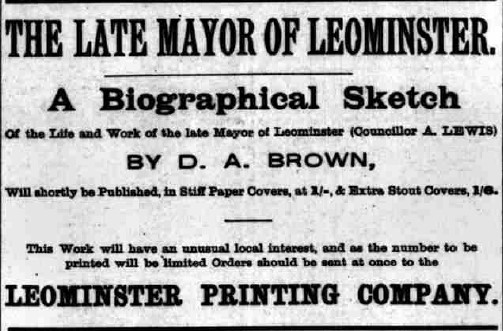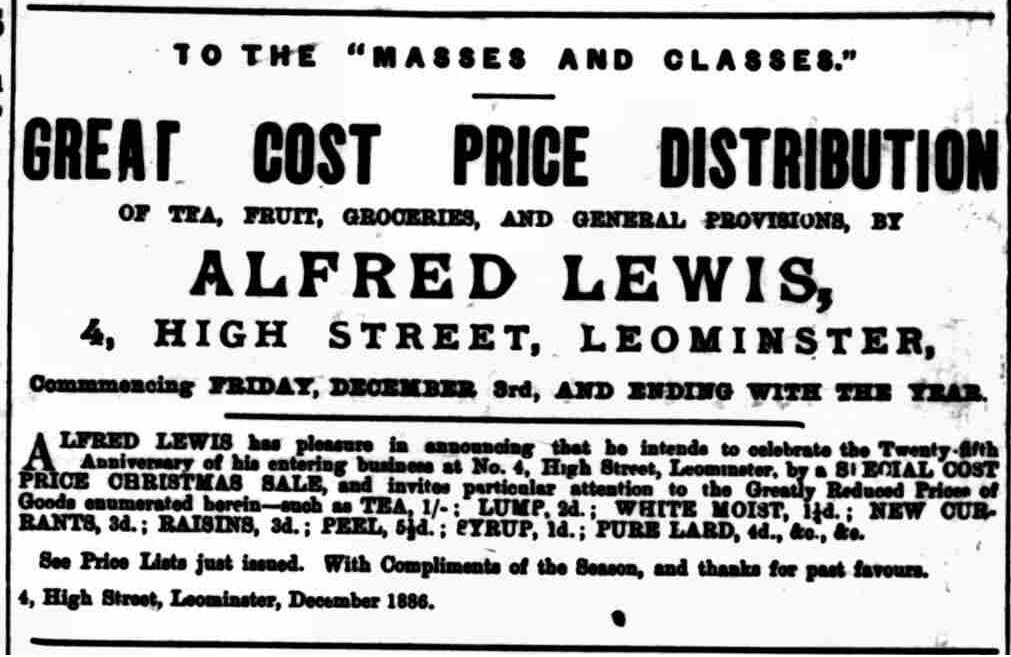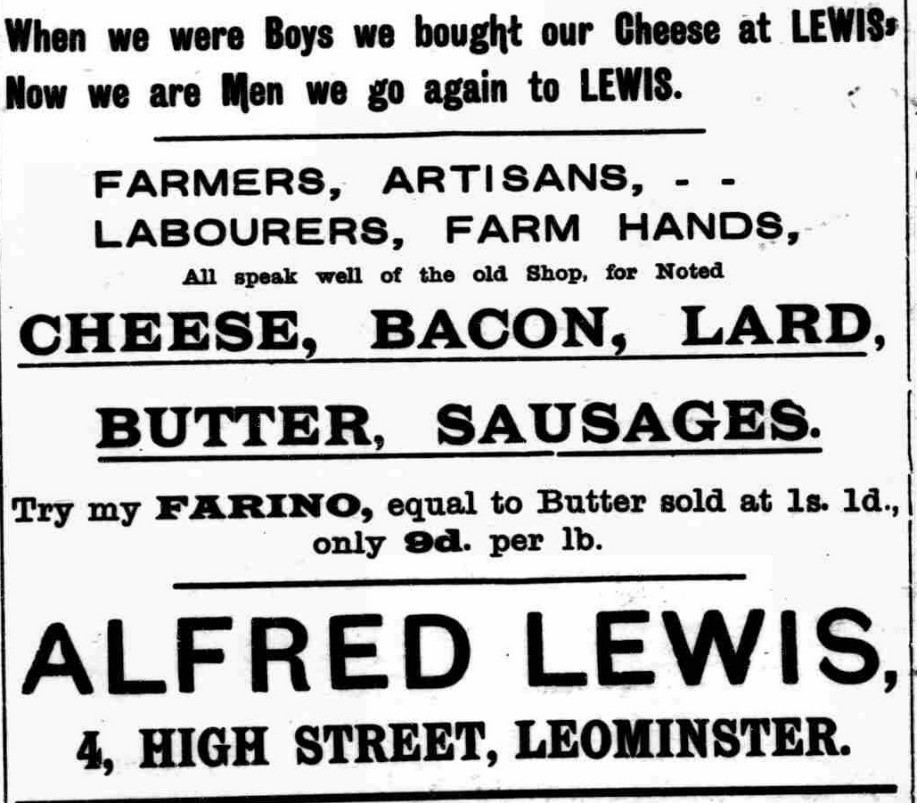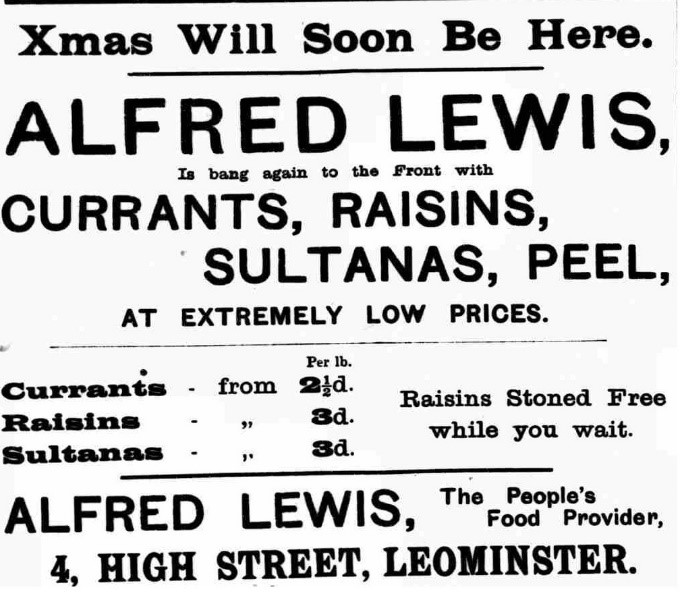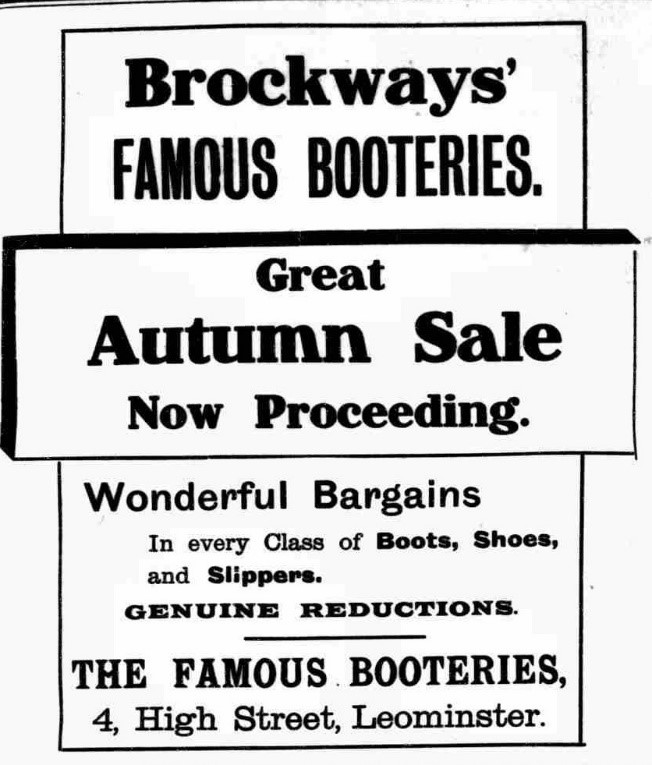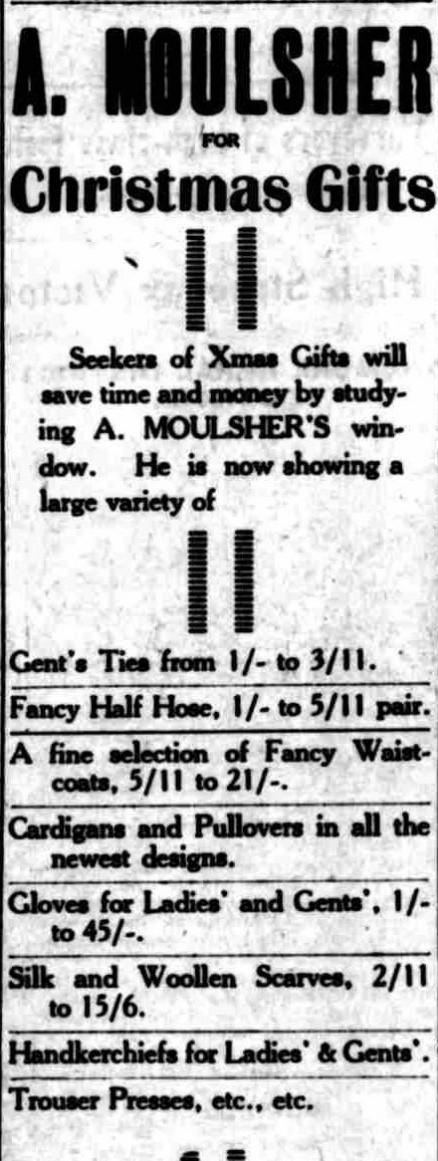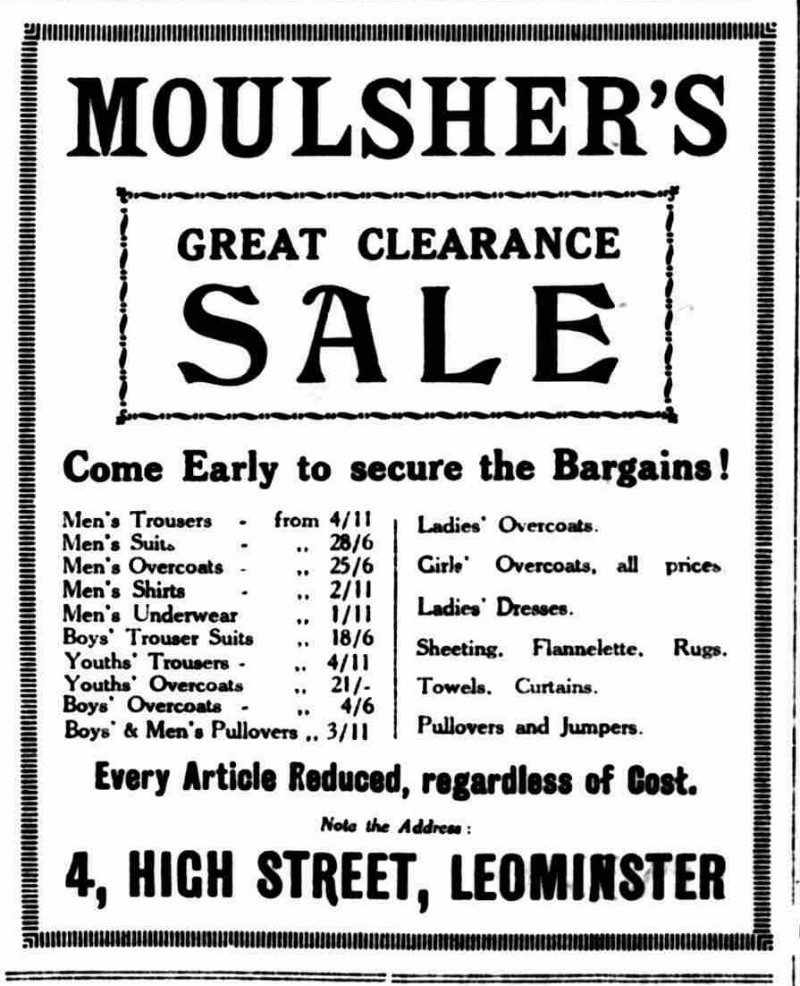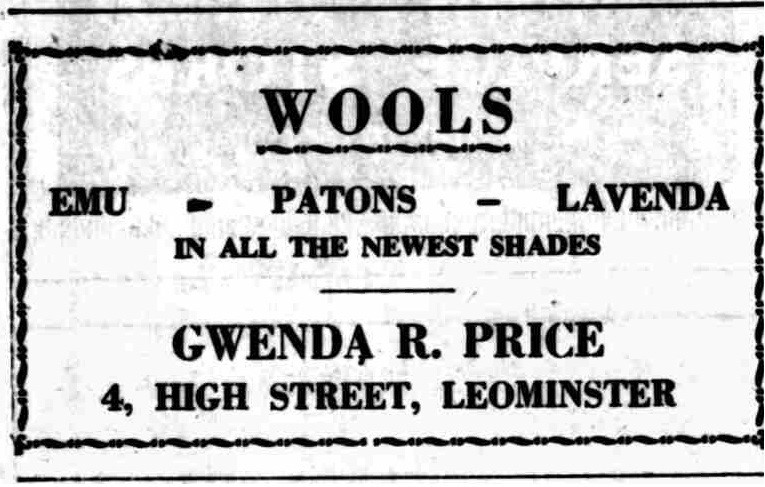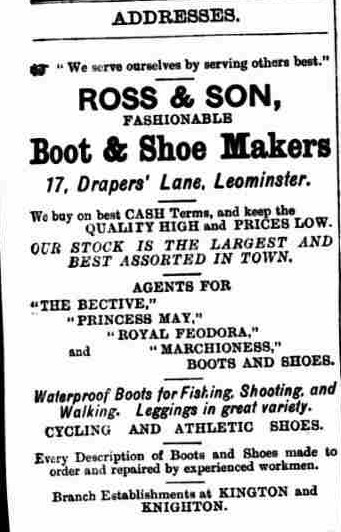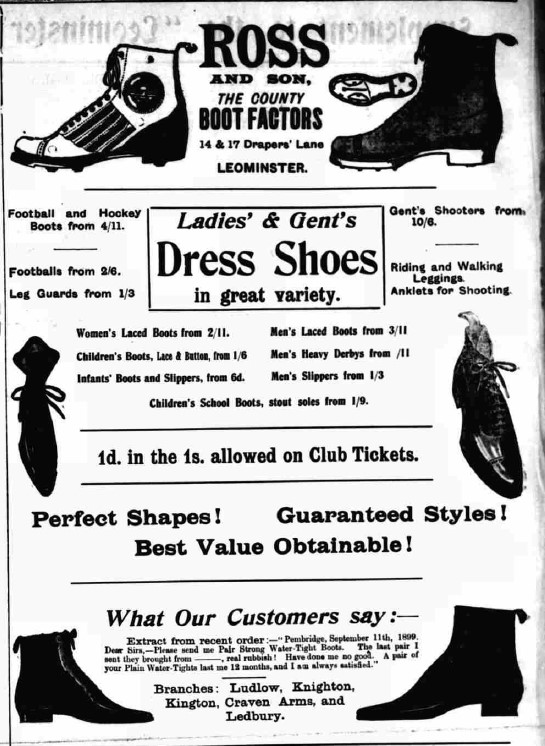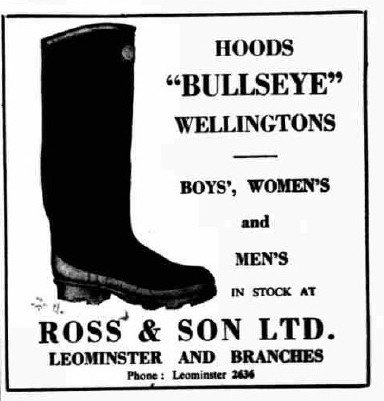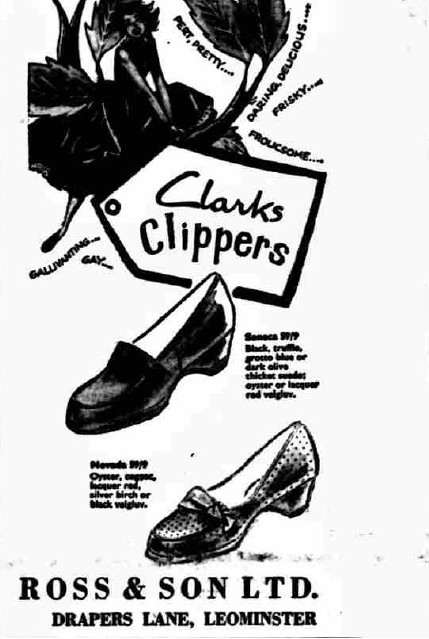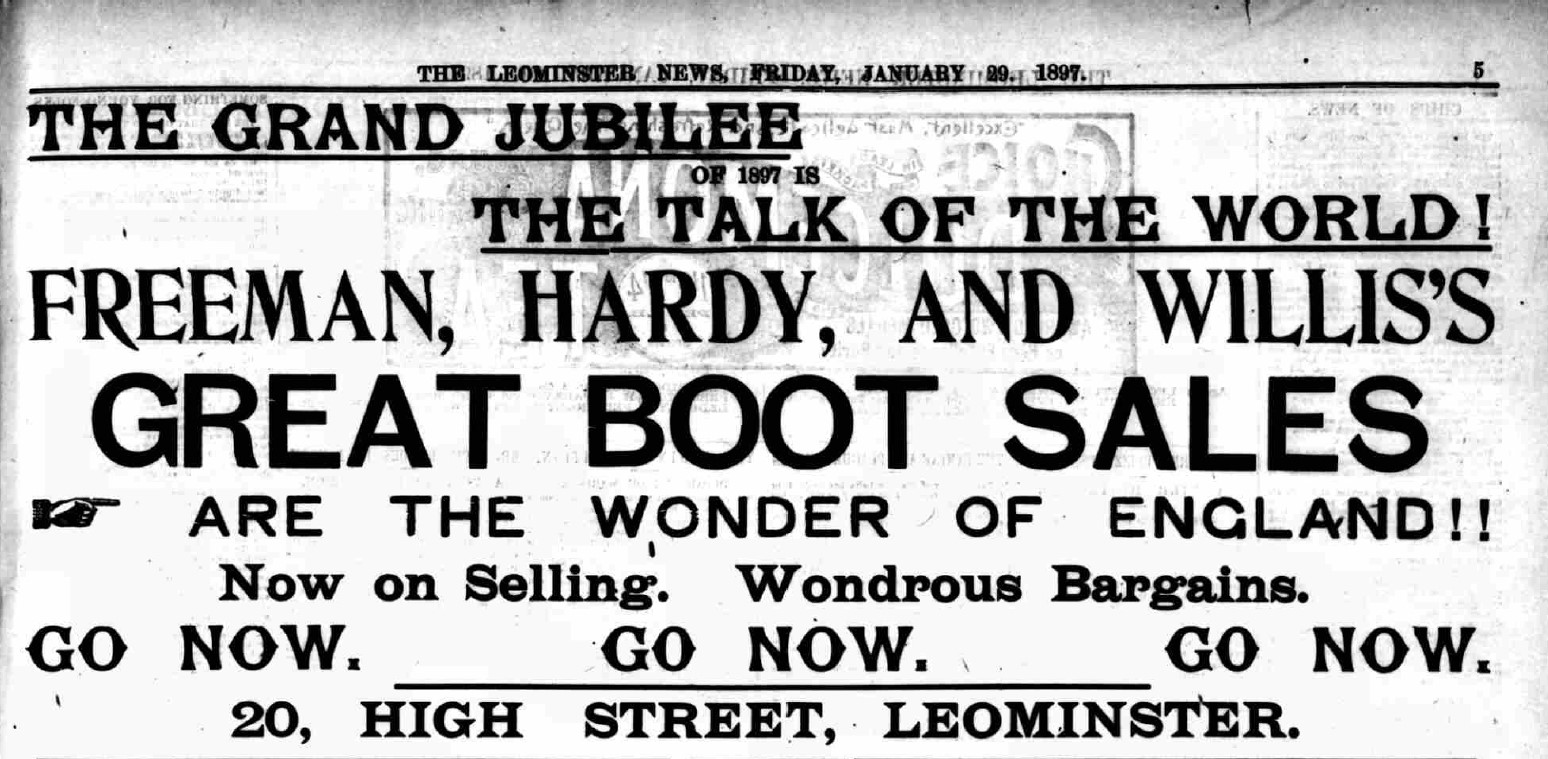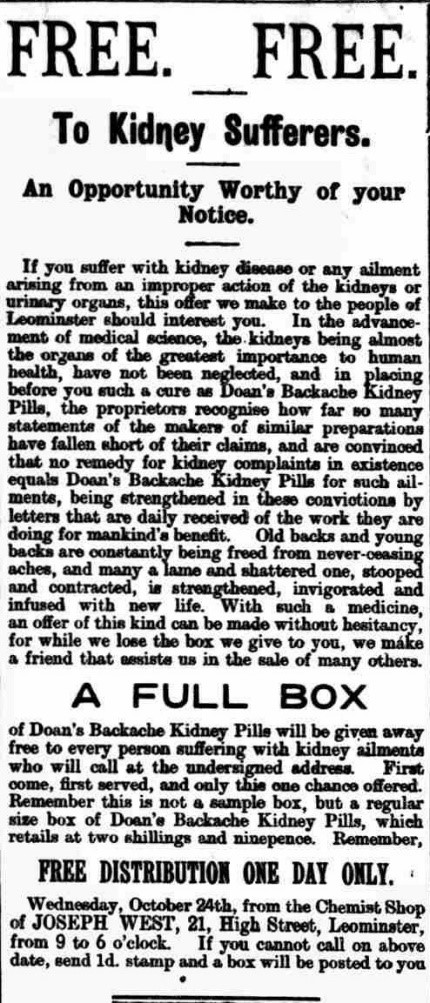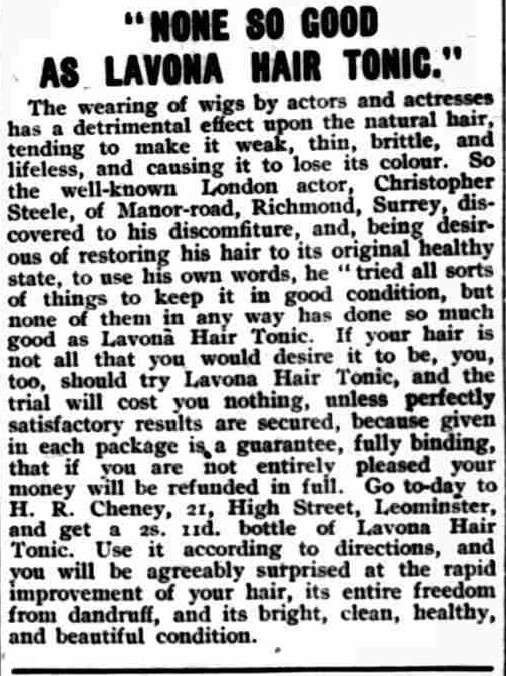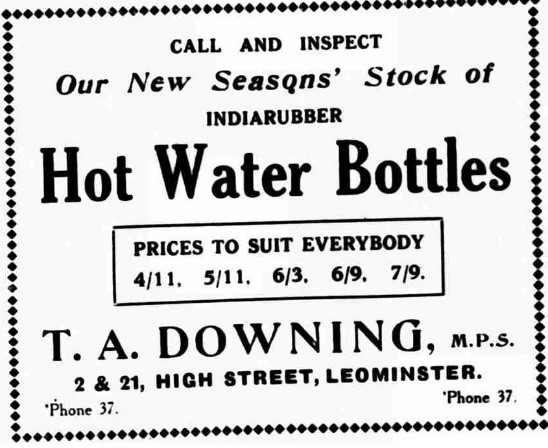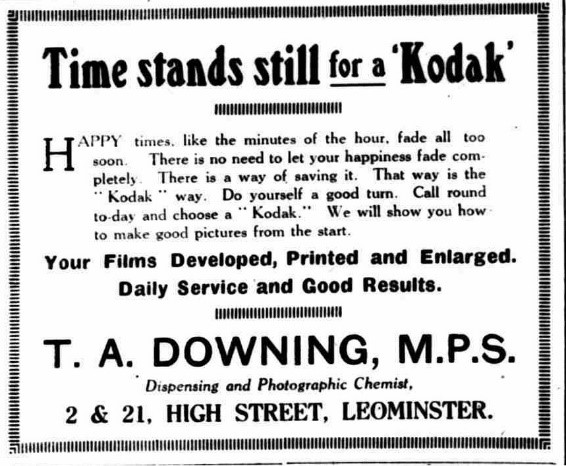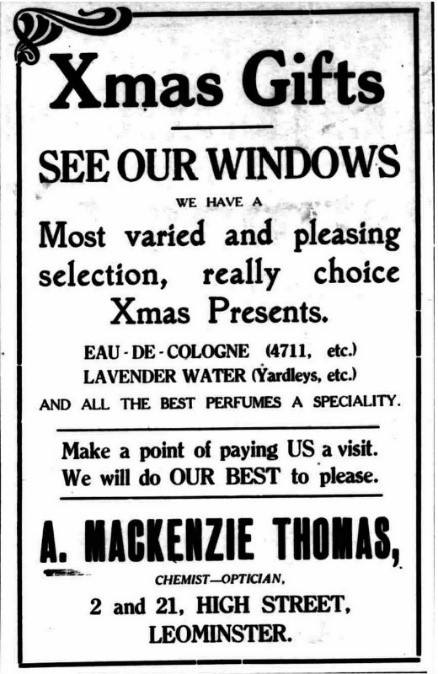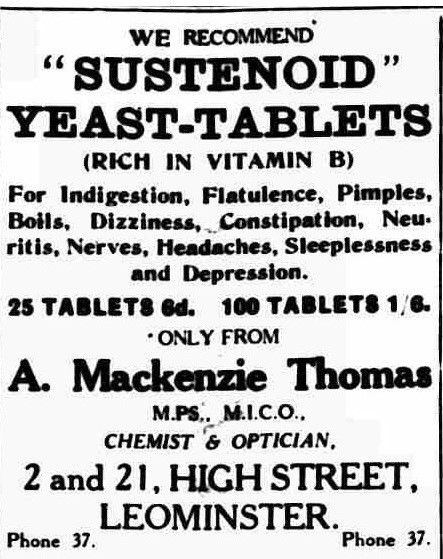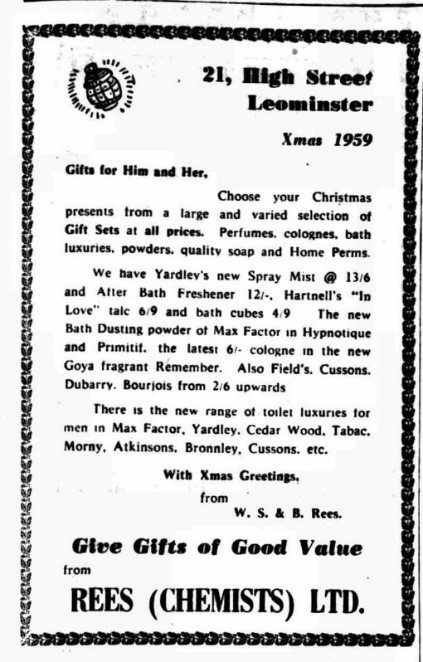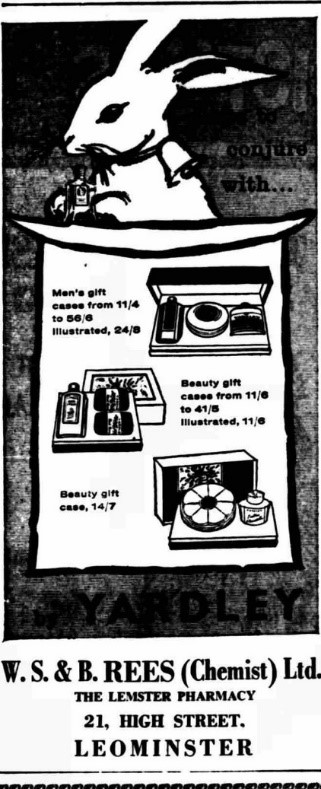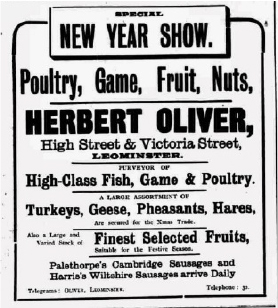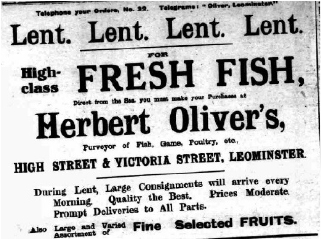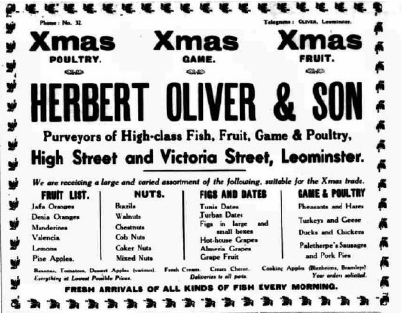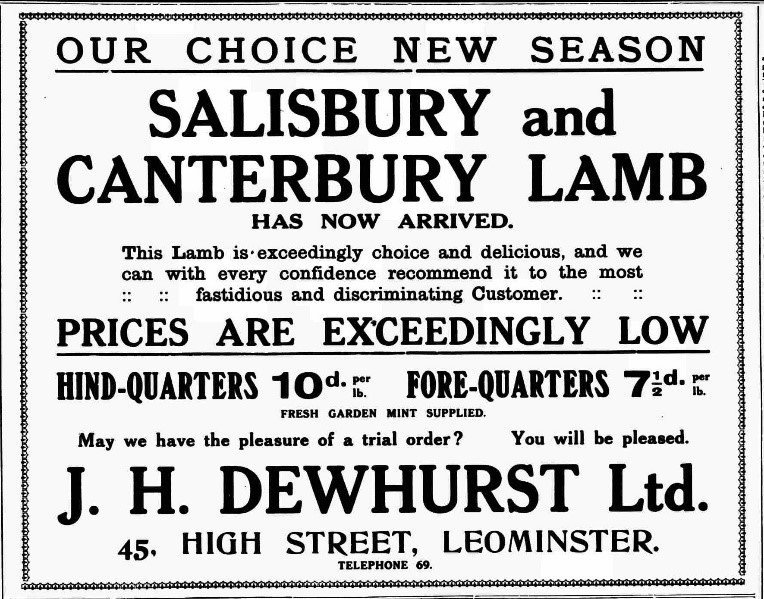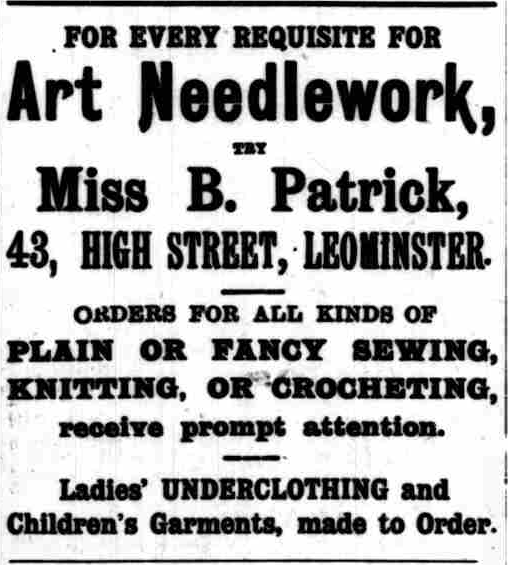High Street
The first official trading space in Leominster was triangular. It probably dated from the 1100s. The line of the current High Street was its western side, Draper’s Lane its eastern side and Corn Street its southern edge.
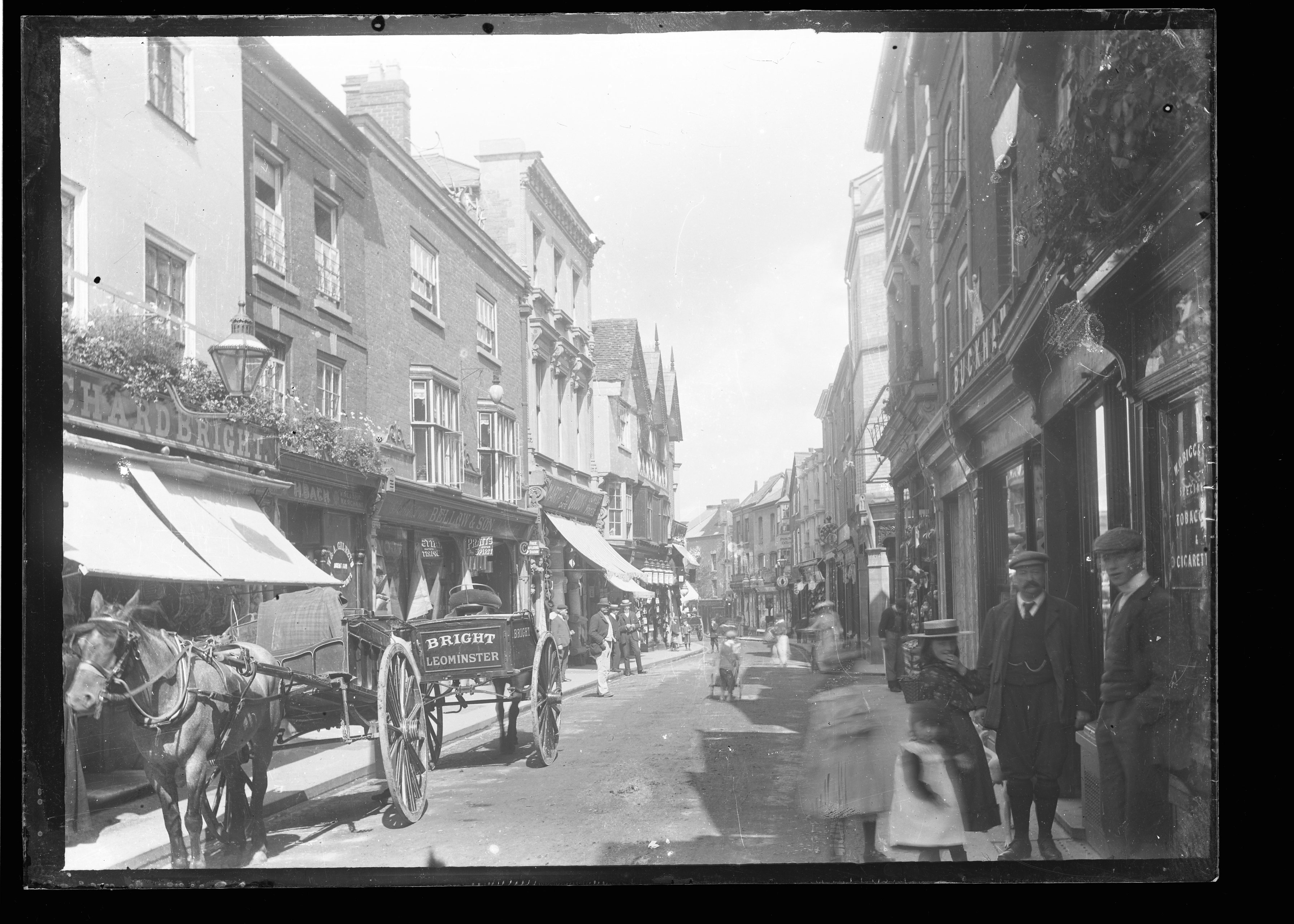
At that time, Leominster Priory was a daughter house of Reading Abbey, and it is possible that a surveyor was sent from Reading to lay out the boundaries of Leominster’s market, as it is very similar in shape and orientation to the first one in Reading. Very quickly, traders changed their temporary market stalls for permanent buildings, which began to encroach on the space, and the only way to get from the High Street to Drapers Lane was through narrow alleys such as Ironmongers and Cordwainers Lanes. Their names showed that different trades began to congregate together.
The market space got smaller. In its original position, Grange Court market house would have been at the centre. 8-10 High Street was built in the 1600s; the four carved heads on either side of the later bay windows may have been cared by John Abell, the King’s Carpenter who built Grange Court. Seven or eight other buildings in the Street date from the same period.
4 High Street
Now Bluebells Florist
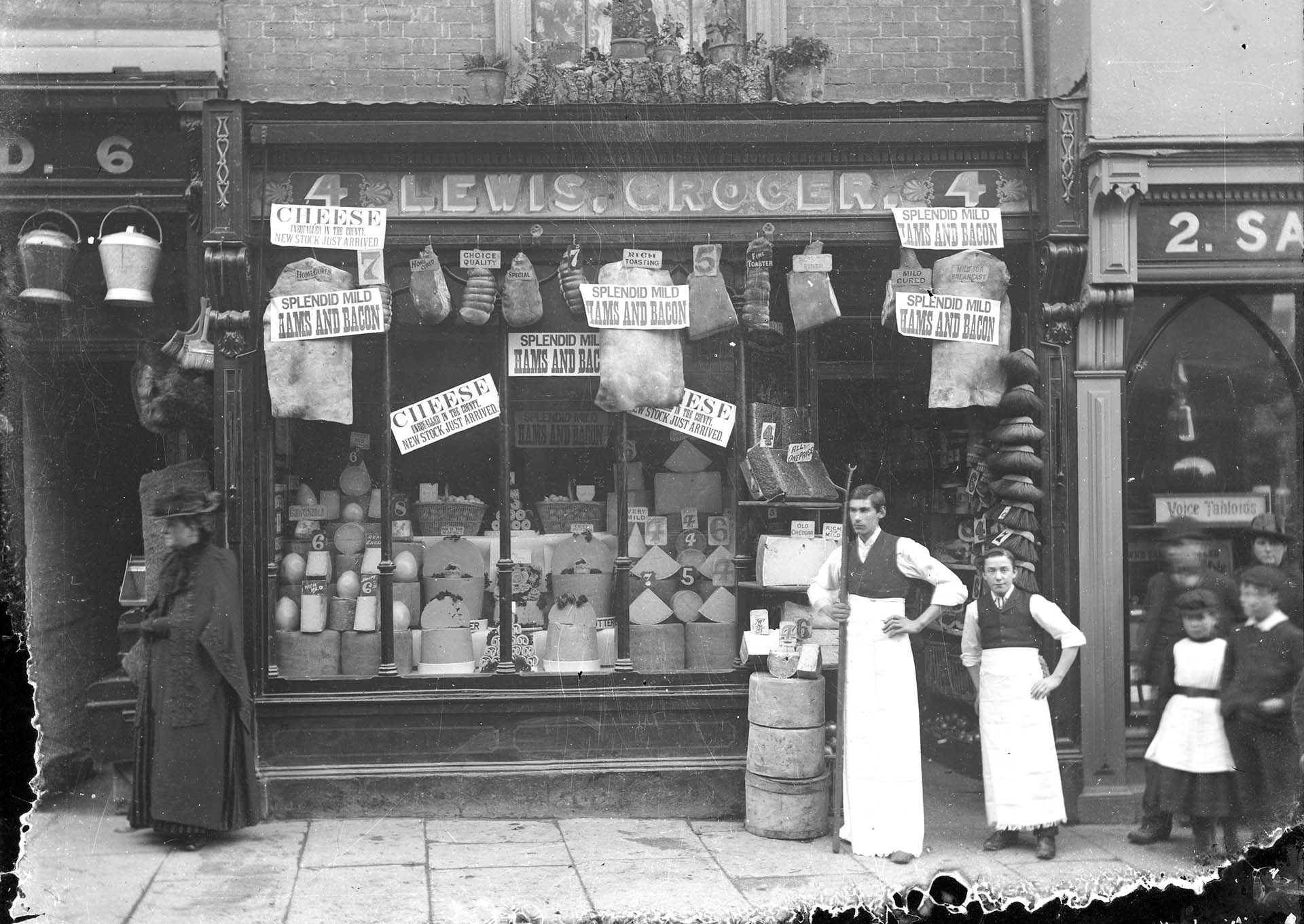
The core of this building was constructed in the 17th century. Like so many others in the centre of Leominster, a brick facade was added to the timber frame early in the 19th century. The early shop would have been familiar to John Scarlett Davis, Leominster’s own artist, who lived next door. The shop front in this photo is identical to the one that is still there now and was probably added in the 1890s. The owner of the shop as it was in the photo, Alfred Lewis, was an important figure in the town and Mayor of Leominster in 1888 and 1900.
One of Mr Lewis’s newspaper advertisements gives a clue as to when he started his grocery business. In 1886, he had a special sale to celebrate the 25th anniversary of his starting business at 4, High Street, which means that he must have opened in 1861. By 1909, Lewis’s shop had closed after almost 50 years of business, & become ‘The Booteries’, but that did not last long. By the 1920s, it was called Moulsher’s, and sold ready-made clothes. In 1959, it was advertised as being owned by Gwenda Price. She appears to have sold more knitting and sewing supplies and less clothing.
Number 4 High St is now home to Bluebells Florist, a long-established Leominster business with over 30 years of trading. They specialise in all things floral, from birthday to gift and funeral flowers and everything in between, including fresh silk and dried flowers, as well as a large selection of plants. Find out more on the Bluebells website.
17-19 High St
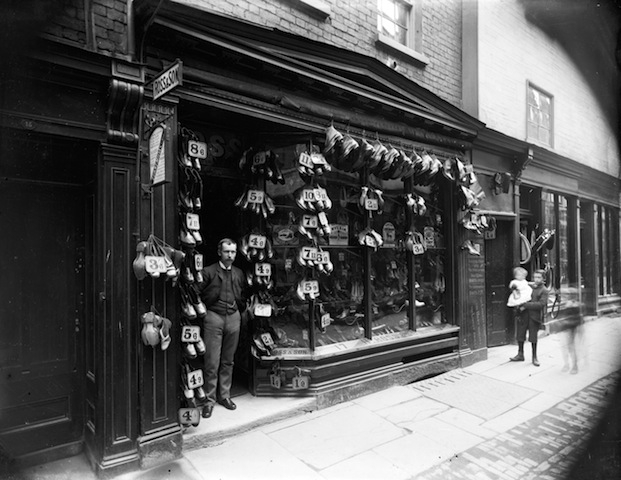
By 1897, this promises was occupied by Ross and Son, boot and shoe makers, repairers and sellers. The business also had a shop front in Drapers Lane. Judging by their regular advertisements in the Leominster News, Ross and Son remained in Leominster for over 60 years, until at least the mid-1950s. The business advertised almost weekly in local papers. They ran effective marketing campaigns, offering free purses and portraits of public figures to people who spent well in the shop. They also offered discounts to cash buyers and ran ‘boot clubs’ to hop pickers and others, allowing them to pay for their footwear in instalments.
20 High Street
Now WS & B Rees Chemist
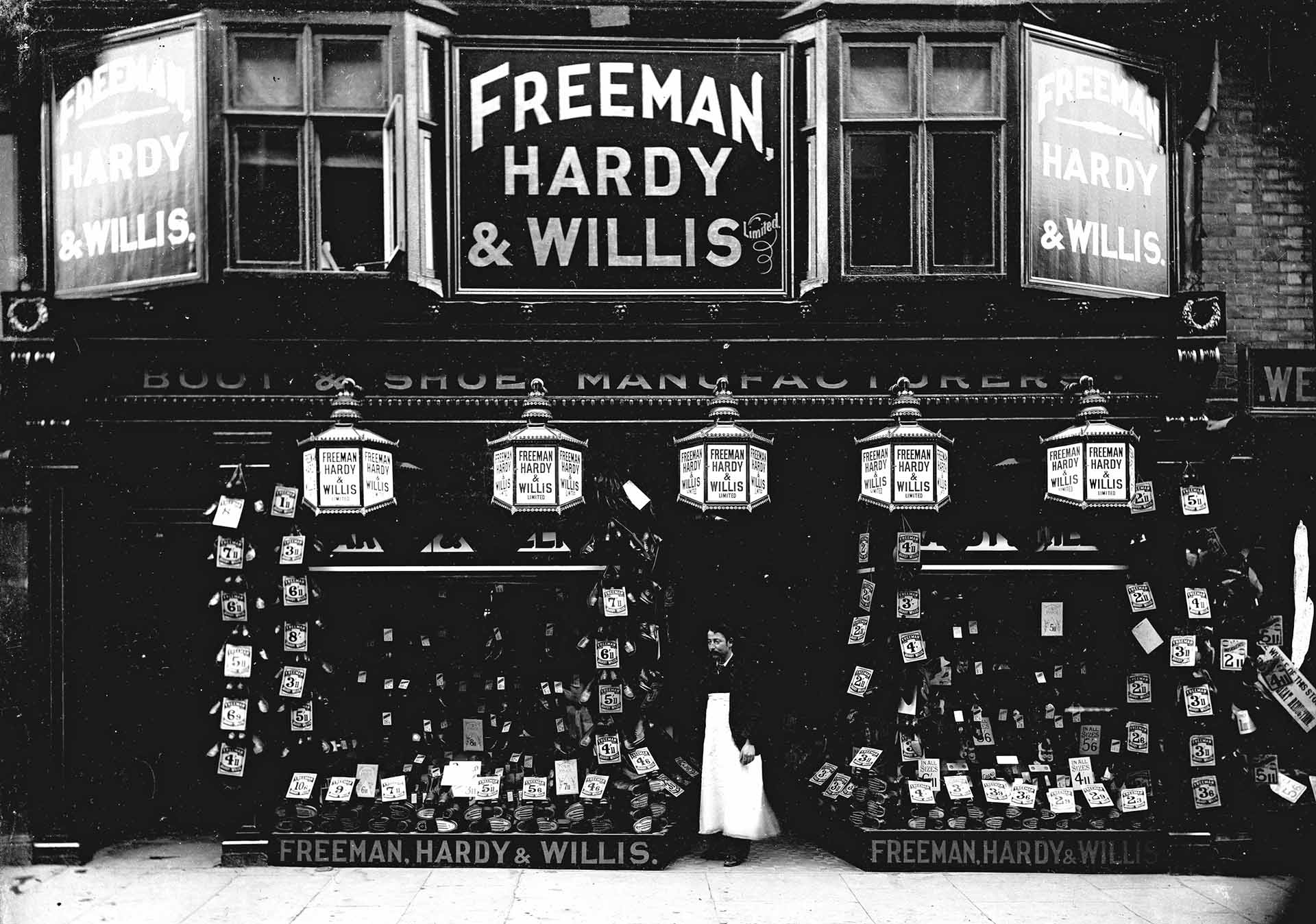
This timber-frame building was started in the 1600s but has been heavily altered since. The two bay windows on the first floor were added to the front in the late 1800s, and the shop front early in the 20th century.
The Freeman Hardy Willis Company was started in Leicester in 1875 by Edward Wood, Arthur Hardy and William Freeman. They opened their first retail shop in Wandsworth London in 1877, and by 1921 had over 400 shops across the country. The branch in Leominster was opened before 1905 and was located at 20 High St. The Company became part of the British Shoe Corporation, which eventually collapsed in the 1990s. The Corporation sold 44 of its former branches, including the one in Leominster, to Stead and Simpson. Although the company has gone, the initials FHW can still be seen in the entrance in front of the door.
21 High St
Now Jumping Ships
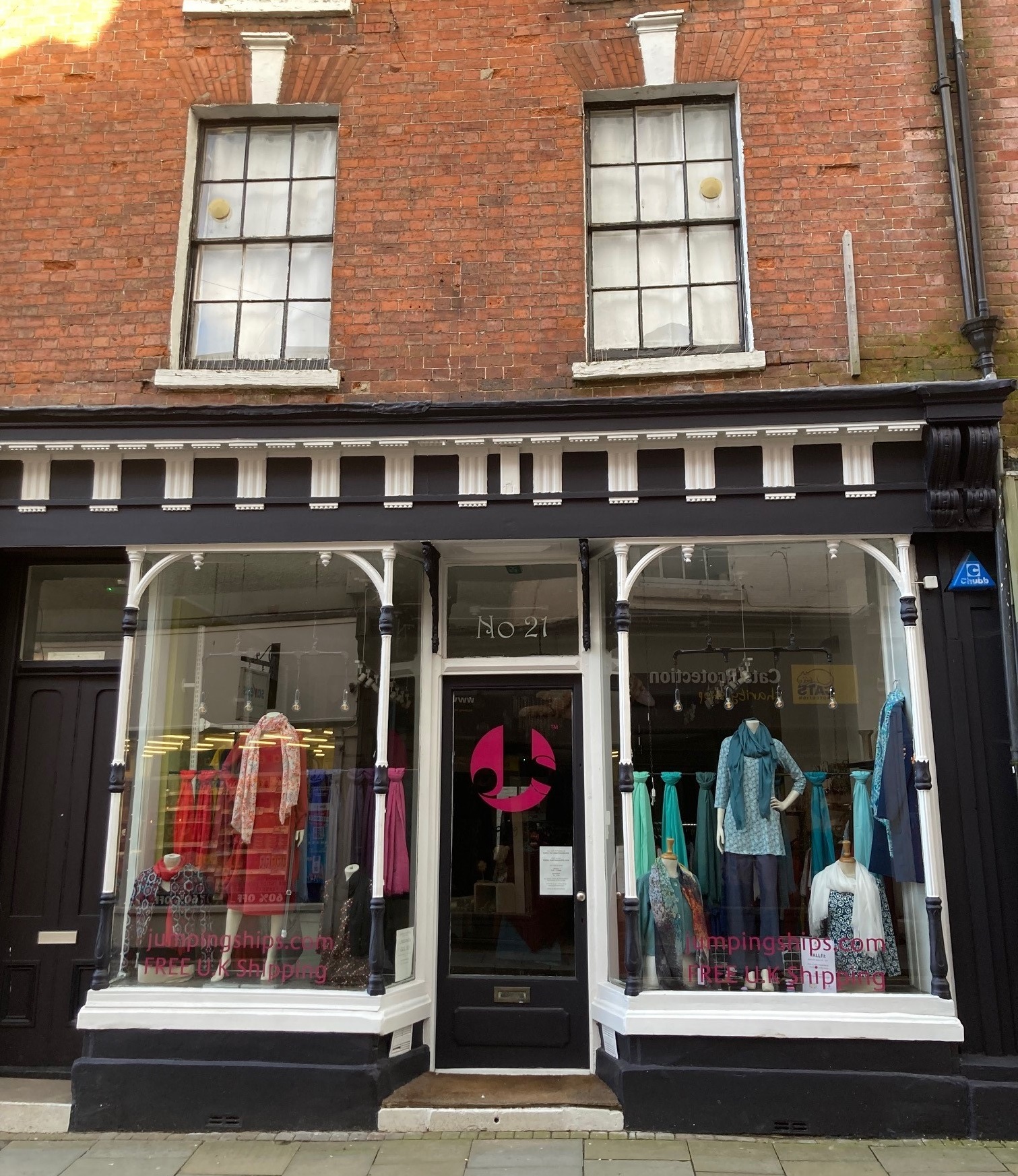 |
For well over 50 years this large shop was one of the most important pharmacies in the town. It was owned and run by several different people. Advertisements in the Leominster News tell us who was running the shop at particular times.
In 1900, Mr West was giving away free boxes of ‘kidney pills’ to his customers. By 1919, Mr Cheney was advertising Lavona Hair Tonic. By the 1920s, Mr Downing was selling hot water bottles, luxury soaps and, like many other chemists, offered a photographic film developing service. By the 1930s, Mr MacKenzie Thomas offered an optician’s service and a variety of luxury cosmetics for sale, as well as yeast tablets, which he claimed cured a great variety of ailments.
By the 1950s, the shop was known as ‘The Lemster Pharmacy’ and was run by Mr Rees. As control grew over what medicine could be sold over the counter, there was more emphasis on selling luxury items. There is still a pharmacy in the High Street , which has the name Rees on the front, but it is now on the opposite side of the road.
This shop is now home to Jumping Ships, a unique British Brand of Ladies Fashion.
Parrys, 31 High Street
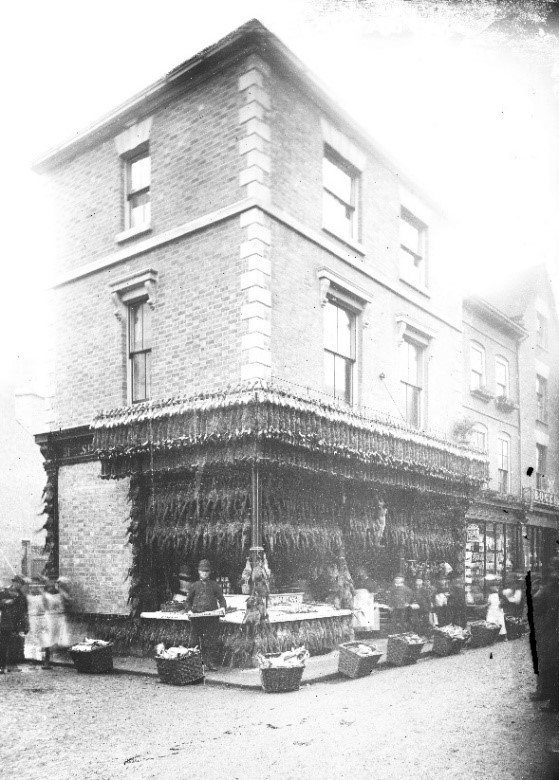
Historic photos show that the exterior of this shop has changed very little for more than 100 years. It has always been a food shop, but has offered different goods at different times. The name Seager can be seen several times in old photos of the shop. A Mrs Elizabeth Seager was listed as being a ‘fish salesman, fruiterer and game dealer’ at this address in the local Kelly’s Directory in 1879. She was clearly a very successful businesswoman – a widow in her 30s, she had two shops in Etnam Street too.
The top photo was probably taken around this time. There are hundreds of hares and pheasants for sale, together with a basket of oysters. On the other side, grapes and other fruit are on display, so perhaps the shop was preparing for Christmas.
A later photo, looking down Victoria Street, can be found in the images section below. By this time, the shop was selling fish, and boasted a ‘cool chamber’ to keep it fresh.
In the early 20th century the shop was owned by Herbert Oliver who died in the 1950s. His name can still be seen in the entrance to the door. As well as being a greengrocer, it still sold meat, fish and game. Now it is called Parry’s and specialises in selling fruit and vegetables.
43-45 High St
Now Best Wishes
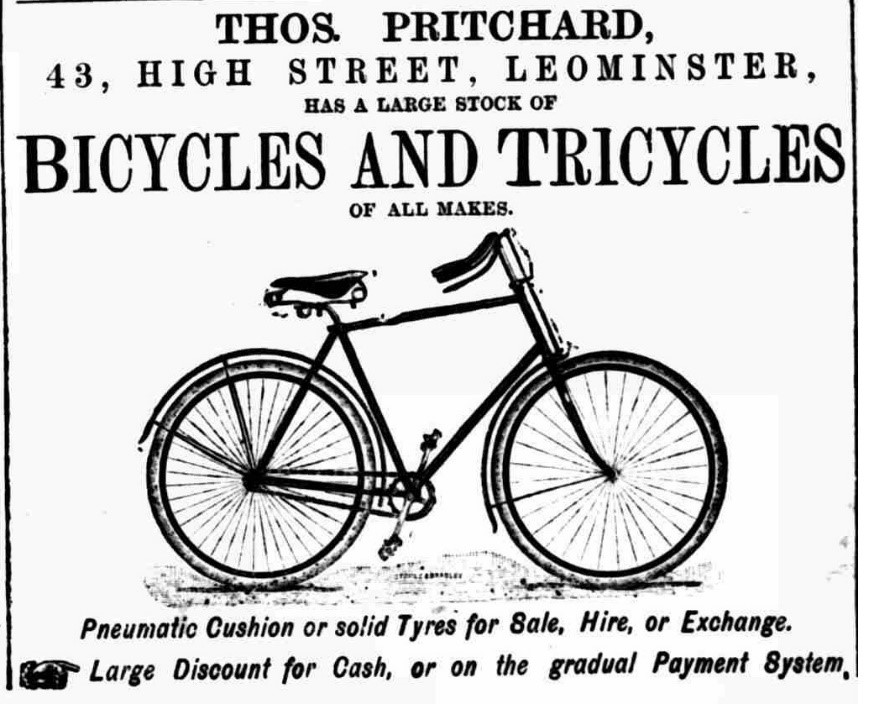 |
| 43 High St was a bike shop in the late 1800s and early 1900s. |
43 and 45 High Street have now been combined into one greeting card and gift shop, but have been two separate units in the past
45 High Street
The oldest part of this 3 storey timber-frame building with attic and cellar dates from the 1600s. It had a shop on the ground floor and living space upstairs. It was extended in the 1700s, when many of the sash windows were added. The present shop front was added in the early 20th century.
A photo of the shop, taken in 1932, can be found on the Historic England website. The image shows that the timbers were covered by render until at least that date. It also shows that there used to be a butcher’s shop here, called Dewhurst’s. It was one of a chain of shops with the same name across the country. The chain was started in Liverpool in 1897. Its growth was due to the import of frozen meat from South America, carried in newly invented refrigerated ships. The company slowly shrank & eventually closed in the early 2000s.
43 High Street
Although it is now combined with number 45 to make one shop, number 43 once had a separate life of its own. The core of the house was built in the 1500s or 1600s, and the front added in the 1700s.
In the late 1800s and early 1900s, it was a popular and successful bicycle shop, run by Thomas Pritchard. By 1907, the bicycles had gone and it became a haberdasher’s shop, selling sewing and knitting materials, as well as clothes. It was run by Miss Patrick, who sold it to Miss Vaughan and Miss Bedford in 1910.
Image Acknowledgements
Images of advertising sourced from British Newspaper Archive (www.britishnewspaperarchive.co.uk) and The British Library Board.
© 2022 Findmypast Newspaper Archive Limited.
Images of Leominster shopfronts with kind permission from Herefordshire Museum Service.

